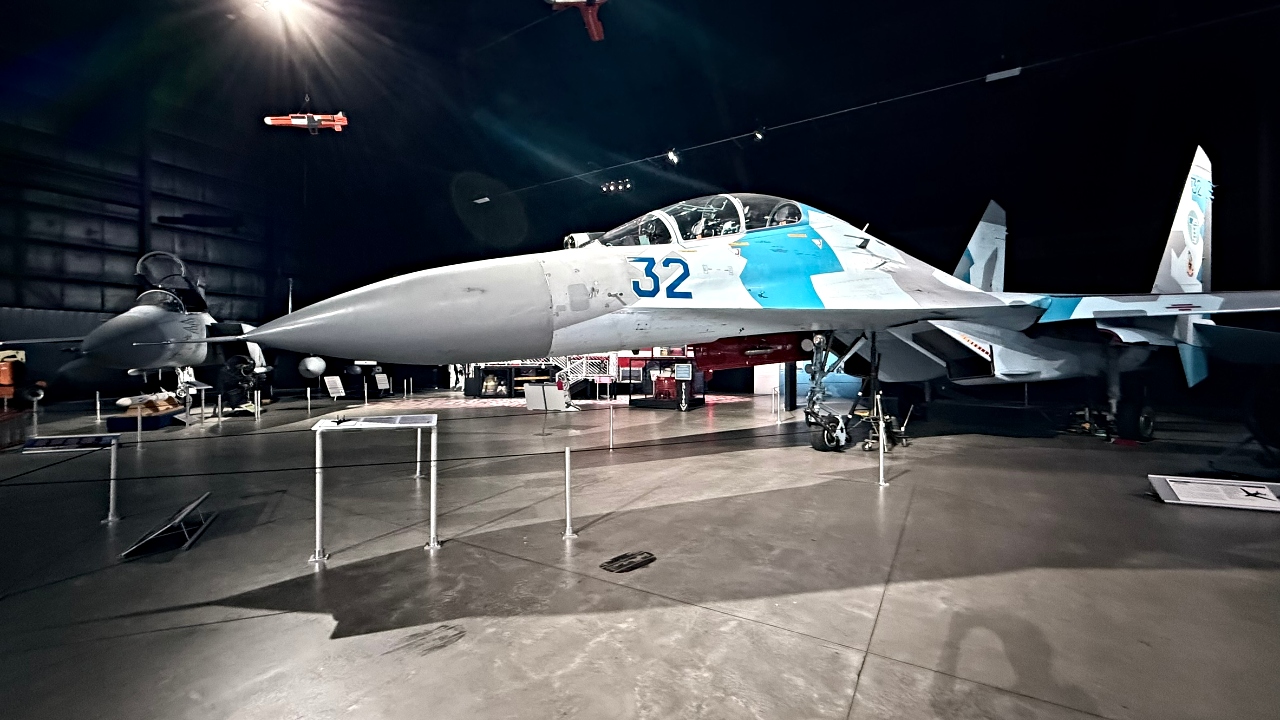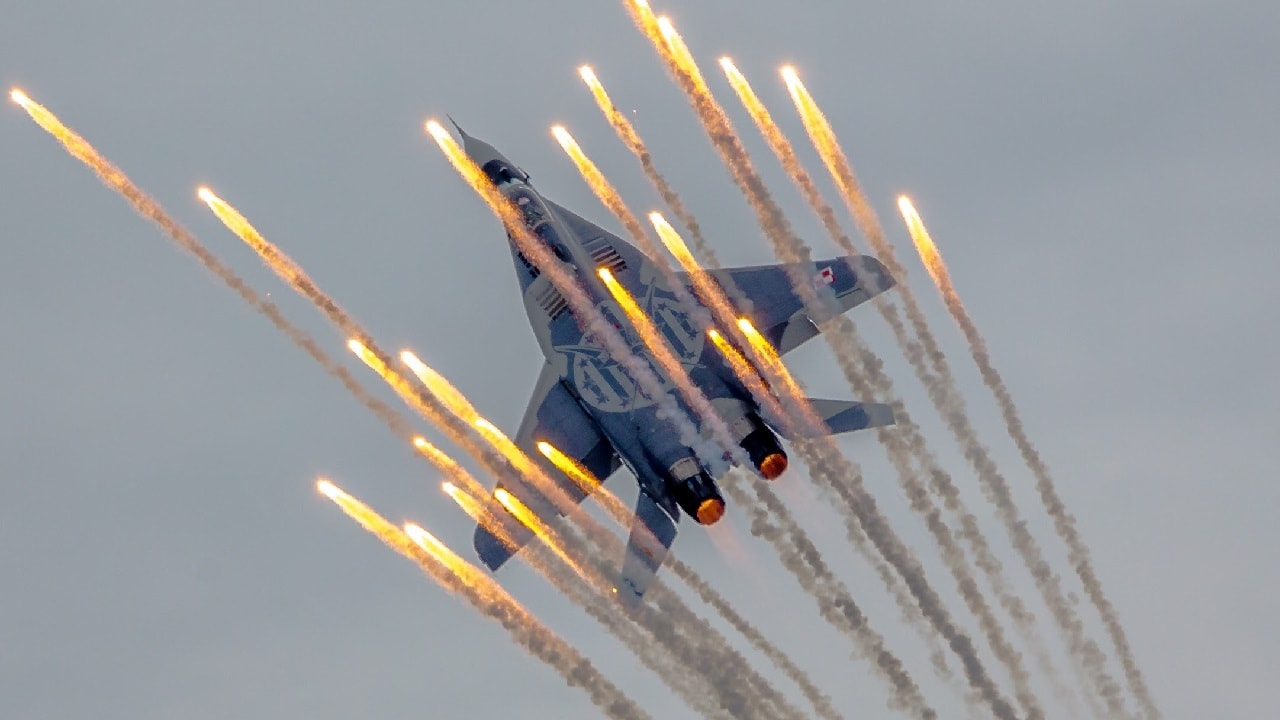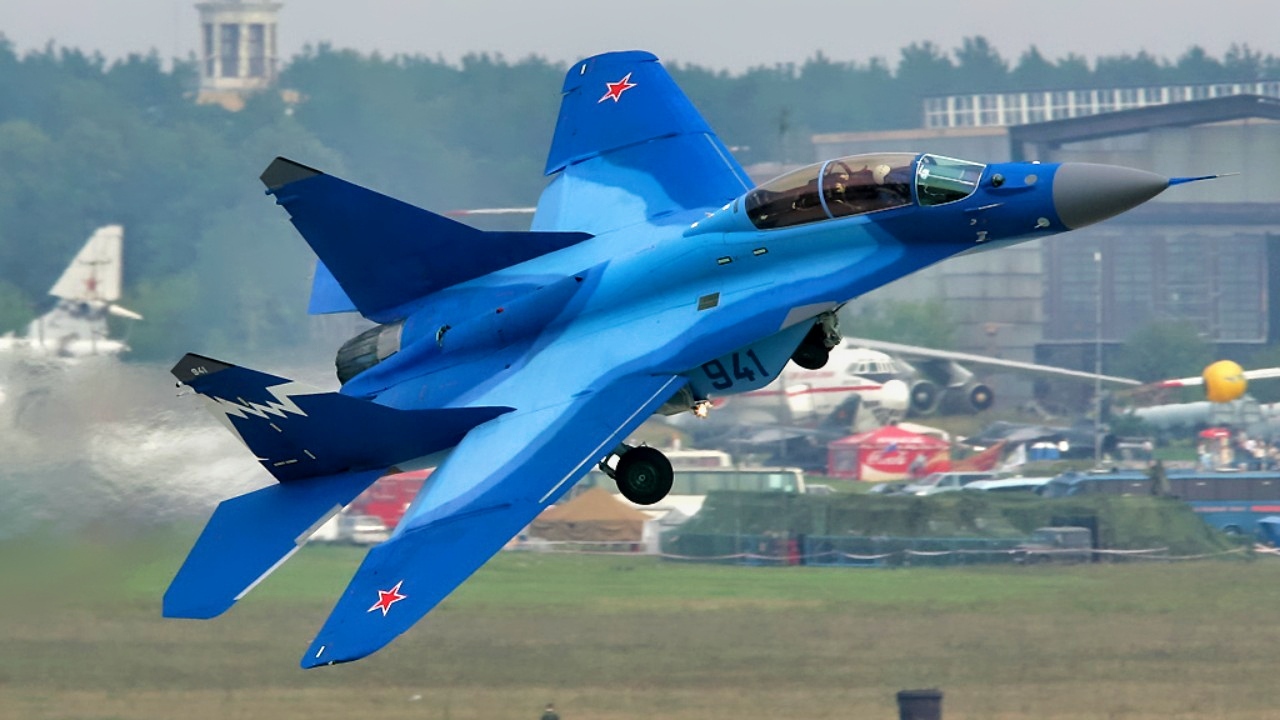Key Points and Summary – In the late 1990s, Washington quietly bought Moldova’s surplus MiG-29s not to fly them, but to keep them out of Iran’s hands.
-The jets offered Tehran a ready-made platform to evolve into a nuclear-capable delivery system — one more step in the slow accumulation of capabilities that makes a bomb usable, not just buildable.

MiG-29 Fighter. Image Credit: Creative Commons.
-This low-profile move captured a mindset largely missing today: treat delivery systems, not just centrifuges, as central to nonproliferation.
-With Iran now fielding advanced missiles, drones, and near–weapons-grade uranium, he contends the MiG-29 precedent shows how modest, early actions can still meaningfully slow a determined proliferator.
The Secret MiG-29 Purchase That Still Shapes Iran Policy
In the late 1990s, Washington pulled off a move so quiet it barely registered beyond a handful of desks in the Pentagon. As part of the Cooperative Threat Reduction program, it bought Moldova’s fleet of MiG-29 Fulcrums.
The United States did not need these fighter jets. They were not cutting-edge and were not destined for U.S. squadrons.
What mattered was who wanted them. Tehran was hunting for platforms that could anchor a future nuclear-delivery capability, and these surplus Soviet fighters fit neatly into the profile.
Washington buying them out from under Iran was a small, tidy intervention that kept a potential problem from growing teeth. It was the sort of sober, pre-emptive step that has become far too rare in nuclear policy debates today.
Why the MiG-29s Were Worth the Trouble
The MiG-29 never carried the mystique of the Su-27 or later Russian designs, but it was no throwaway jet. It could haul a serious payload, had the internal space and power to be adapted for heavier munitions, and came with variants wired for more advanced missions.
For an Iranian air force built around aging U.S. legacy fighters, Moldova’s Fulcrums would have been a valuable expansion and upgrade.

Iran F-14 Tomcat Fighter. Image Credit: Creative Commons.
They would have delivered an immediate boost to an air force dependent on worn platforms and offered a proven airframe that Iranian engineers could study, modify, or turn into a stepping stone toward a nuclear-capable strike system.

Su-27 Flanker from U.S. Air Force Museum. Image Credit: National Security Journal.
American officials saw the danger clearly enough. Nuclear weapons do not appear overnight. They emerge from a slow accumulation of capabilities—centrifuges here, metallurgy there, and somewhere in the mix, a delivery platform capable of carrying a finished device. Moldova’s MiGs could be a small but meaningful piece in that mosaic. Removing them from circulation was a way of preventing an incremental gain from becoming a future crisis.
The Logic of Proliferation
A nuclear program is a web of interdependent elements—material production, weapon design, delivery systems, and command authority. Iran has never hidden its interest in strengthening each strand of that web. Washington understood that curbing nuclear danger required pushing back across all fronts, including the seemingly technical question of what aircraft ended up in whose hands.
Too often today, debates about Iran get trapped in narrow metrics—enrichment levels, breakout timelines, or the precise number of high-speed centrifuges. But a nuclear warhead without a delivery system is inert. A warhead with a viable delivery system becomes a strategic asset. That is why the MiG-29 episode deserves attention.
It reflected a worldview in which delivery systems were not afterthoughts, but central to preventing a nuclear-armed Iran.
The Delivery Problem Iran Has Been Solving
Two decades later, Iran has built a sprawling delivery arsenal. It fields some of the world’s most rapidly advancing ballistic-missile programs. Its precision cruise missiles have demonstrated reach and accuracy across multiple theaters. And its drone fleet—once dismissed as a tinkered-together curiosity—has reshaped conventional and proxy warfare from Gaza to the Caucasus to the Red Sea. Taken together, these systems suggest Iran’s ability to project force and, one day, carry a nuclear payload.
A state with that range of delivery tools is far closer to an operational nuclear capability than it was when Moldova was auctioning off airframes.
The U.S. MiG-29 deal prevent Iran attaining one more platform to fold into a delivery ecosystem that now spans land, air, and sea. It was an early reminder that nuclear restraint succeeds only when every potential accelerant is denied.
Why the Lesson Still Holds in 2025
Iran has amassed unprecedented quantities of near-weapons-grade uranium and retains much of the knowledge and infrastructure of a threshold nuclear state, even after Israeli-U.S. strikes targeting its nuclear program in summer 2025. It has dispersed that program across hardened, redundant sites. It has integrated its missile forces into regional military planning. And its partnerships with proxy groups give it multiple fronts through which it could seek to put its growing capabilities to use.
Prudence is not optional against such an adversary. It is the only way to prevent a latent capability from crossing into operational reality. The United States cannot afford to think of nuclear restraint as a matter of watching centrifuges spin. It requires the same habit of mind that guided the MiG-29 purchase: remove the tools, block the pathways, force delays, and use time as leverage.
Many of the steps available today will look as unglamorous as buying a batch of old fighters from a small post-Soviet republic. But the value of such steps lies precisely in their modesty. They prevent the small gains that, added together, give a proliferator the final pieces of a nuclear force structure.
A Memory Worth Keeping
Those Moldovan Fulcrums never took flight in American markings. Their worth lay in keeping them out of the one place they could have caused genuine trouble. That quiet intervention captured the essence of strategic prudence: Act before the threat ripens, not after it erupts.
As Iran’s nuclear and missile advances bring the region closer to a strategic threshold, the logic of that moment still resonates. Nuclear restraint is not one dramatic gesture but a series of small, precise moves that shape the future by limiting the options of a determined adversary.

MiG-29 Fighter. Image Credit: Creative Commons.
The United States understood that once. It must recover that discipline now.
About the Author: Dr. Andrew Latham
Andrew Latham is a non-resident fellow at Defense Priorities and a professor of international relations and political theory at Macalester College in Saint Paul, MN. You can follow him on X: @aakatham. He writes a daily column for the National Security Journal.
More Military
The U.S. Army’s Bradley Fighting Vehicle Is ‘Totally Maxed Out’
Lockheed Martin SR-72 Son of Blackbird or Darkstar: What We Know Right Now
F-35 Stealth Fighters Went ‘Hundreds of Miles’ Into Iran to Guard America’s B-2 Bombers
Top 5: The F-35 Stealth Fighter Has a Long List of Problems You Can’t Ignore










